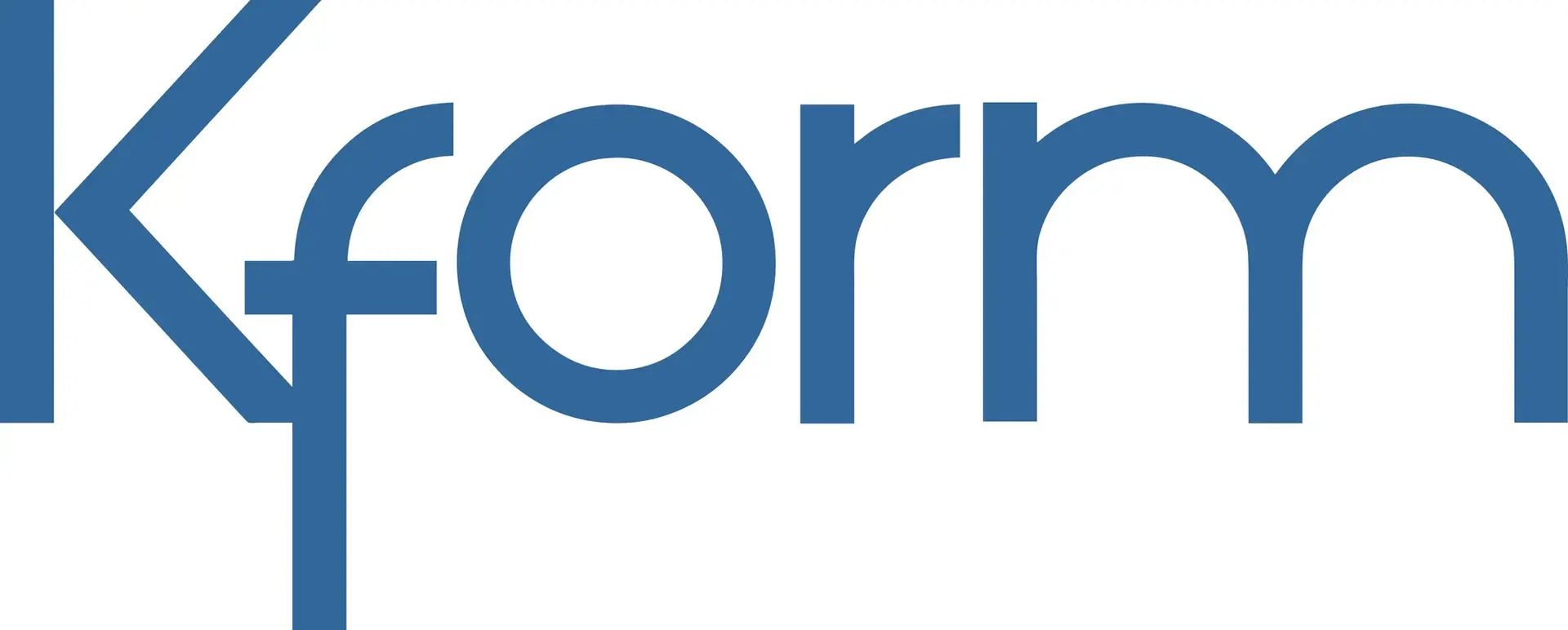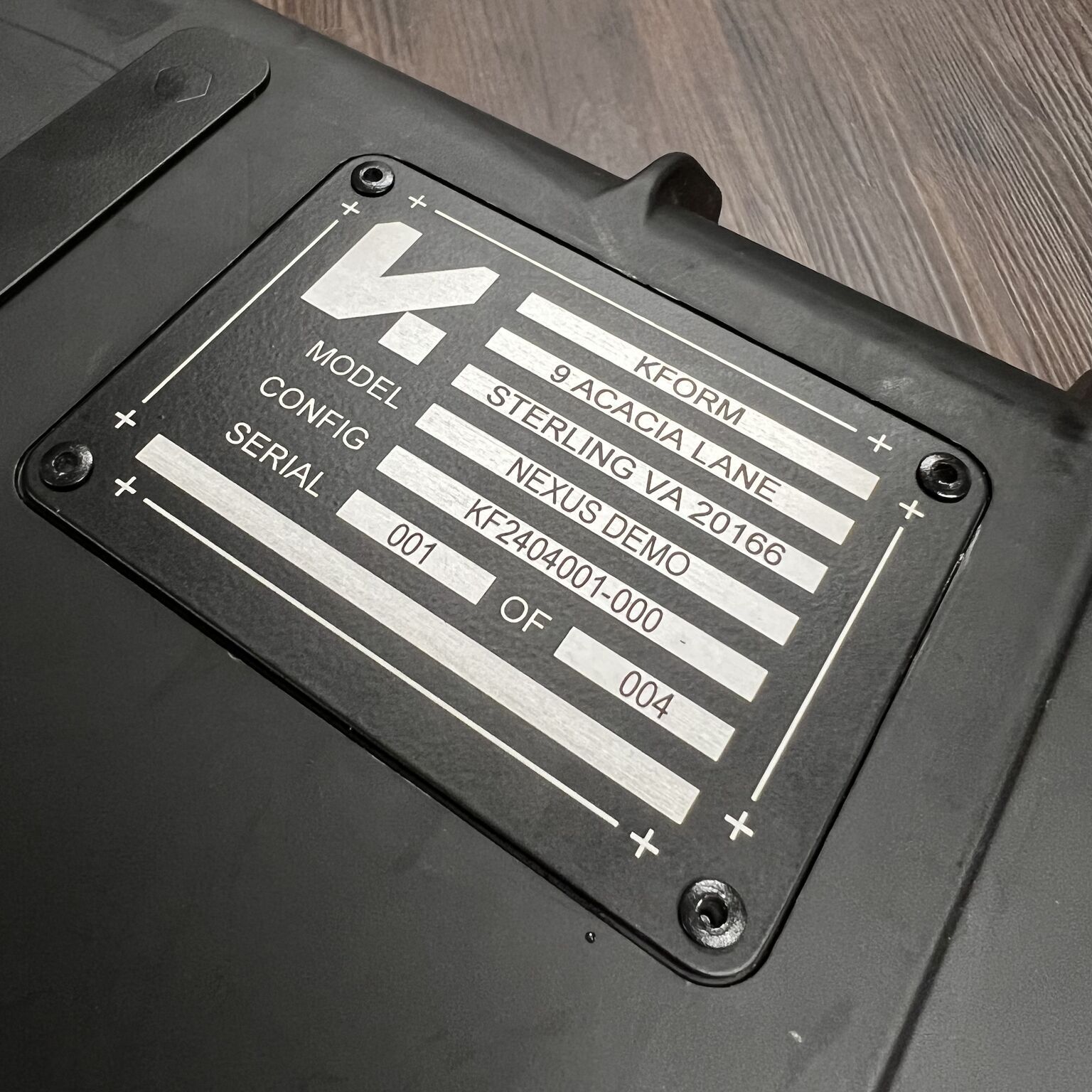- Defense Tech Signals
- Posts
- Defense Tech Signals
Defense Tech Signals
Issue #39 | Kform
Editor’s Brief
Last Week, we looked at Forterra — Building the Backbone of Mission Autonomy
This week, we’re looking at a family-run machine shop that reinvented itself to be the manufacturing layer with startup agility.
Heads up: I am taking the next week off to spend time with the family for Thanksgiving. Defense Tech Signals will be back in your inbox 09 December 2025

Signal Brief: Kform - When the Old Guard Moves Faster Than the Disruptors
Kform is a hybrid consultancy and manufacturing as a service (MaaS) platform designed to help startups and commercial firms navigate the notoriously difficult federal acquisition regulations (FAR) and the "Valley of Death.” With 40+ years of manufacturing experience, Kform now provides the essential compliance, engineering, and manufacturing rails that allow startups to deploy hardware solutions to the warfighter.
Origins & Vision
Founded in 1980 as Circle-K-Industries, Kform began as a family-run machine shop focused on traditional fabrication and sheet metal services. For decades, it operated as a reliable small contractor supporting DoD and intelligence customers across the National Capital Region.
By 2019, then–Chief Business Development Officer Callye Keen saw the same systemic failure everyone in defense tech complains about: Startups can build prototypes, but they can’t transition them into deployable military hardware.
So Kform made a radical pivot. It rebuilt itself from a transactional job shop into a full-lifecycle defense partner, designed to carry systems from concept → prototype → LRIP → full production without vendor switching, re-certification, or compliance resets.
Today Kform spans tech scouting, product development, engineering, compliant manufacturing, and federal business development in integrated platform built around one mission:
Compress the timeline between good technology and fielded capability.
Key Takeaways
SPARC creates verifiable production readiness: The Surge Production & Readiness Command gives the DoD real-time, machine-verified visibility into U.S. manufacturing capacity.
Compliance as a decisive advantage: CMMC Level 2, NIST 800-171, ITAR, ISO 9001, and a 45-year track record provide contract eligibility most startups cannot achieve in time to meet accelerated acquisition timelines.
A lean footprint that delivers speed: Vertically integrated facilities let Kform redesign, prototype, test, and field hardware in weeks, not quarters.
Partnerships move Kform up the value chain: Vantiq, Authentise, Arc34, Wrap Technologies, and Deployable Technologies signal a shift from component manufacturing to integrated C4ISR kit and serial production.
Tech Radar:
BUILD - Manufacturing-as-a-Service
Kform BUILD provides subscription-based access to rapid engineering, prototyping, and compliance-ready manufacturing. Enables defense tech startups to harness the “Build-Measure-Learn” process using rapid demos for market feedback.
Key Capabilities
Broad Engineering – Systems, Mechanical, Electronics including power and embedded, Network, DevOps, Firmware, Cyber, Manufacturing, and other disciplines needed to develop defense systems
Vertically Integrated Production – In-house CNC machining (3-axis and 5-axis mills), fabrication, additive manufacturing, finishing, electromechanical assembly, and even soft goods (bags) supported by engineering
Defense Compliance by Design – NIST 800-171, CMMC Level 2, ITAR registration, and established CUI handling procedures built into workflows from day one.
Rapid Prototyping to Production Scale – Seamless transition into LRIP and full production, eliminating costly vendor switches and create processes, compliance, and documentation for SCALE
SCALE - Defense Tech Transformation
Where BUILD makes hardware real, SCALE makes it fieldable.
Tech Scouting: Kform actively scouts technologies from leading accelerators, venture capital firms, and product development companies to bring into the DoD ecosystem.
Production Development: Hardening systems built at TRL 3–6 into rugged, compliant, military-ready hardware for LRIP
Scalable Manufacturing: Digital systems (DDNA, SPARC) establish repeatable, auditable production processes.
Business Development: Rapid pilot frameworks, eval cycles, and VAR/partner pathways to compress transition timelines reduce “Valley of Death” issues
Kform developed two product families to leverage their engineering, manufacturing, and compliance expertise that reduce customer development costs.
Raider Family – Edge Computing and Tactical Networking:

Image: Kform
Nexus – Modular expeditionary system integrating compute, sensing, and networking in a ruggedized briefcase form factor. Large integration list using the Kform Tech Partner Network.
Raider Gate – Secure tactical wireless communications platform enabling IoMT and tactical 5G mesh networking
Raider Apex – Short-depth edge compute server for AI/ML for forward deployment in DDIL environments.
Shadow Family – Cybersecurity and Electromagnetic Security:
Shadow Storm –Low-signature, RF-shielded field laptop built on modular COTS chassis, designed for TEMPEST-grade requirements
Shadow Rogue – High-density RF-shielded server enclosure addressing both electromagnetic interference protection and signal interception prevention
All platforms meet or exceed military environmental standards (MIL-STD-810 for climate, DO-160 for aerospace, MIL-S-901D for shock), demonstrating Kform's ability to wrap commercial technology in defense-grade packaging while maintaining rapid iteration cycles.
Market Signals
Strategic Partnerships & Scaling Indicators

SPARC Platform
SPARC Platform Launch - Initially funded by DLA and developed with Authentise and OpenWerks, The Surge Production & Readiness Command provides DoD with real-time visibility into U.S. manufacturing capacity through machine-verified data feeds
Wrap Technologies Manufacturing Agreement - Onshoring production of nonlethal systems, counter-UAS components, and body-worn cameras; Norton, VA facility capable of >23k BolaWrap units and 150k cassettes monthly.
Vantiq AI Integration - Partnership integrating real-time, event-driven software with Kform's rugged hardware for multi-mission sensor fusion with dual-use applications
Arc34 Federal Law Enforcement - Collaboration with Service-Disabled Veteran-Owned Small Business specializing in security surveillance
Looking Ahead
For nearly thirty years, the acquisition system’s dysfunction acted as a buffer. It took over 300 days just to get signatures on a requirements document. But it gave startups one massive advantage:
Time.
You could win a prototype, stumble through NIST 800-171, Google CMMC, and build your security posture while the government waited. Ignorance wasn’t fatal because nothing moved fast enough to punish it.
That protection is gone.
With the acquisition overhaul, speed and fieldability now sit at the center of everything. When programs accelerate, you don’t get three years to become compliant. You don’t get a grace period to build a cleared facility. You don’t get to learn ITAR after you win the work.
This is where manufacturers with real throughput and compliant infrastructure become decisive. Not because they’re “innovative,” but because they remove the time penalty you can’t absorb anymore. They take a prototype straight into LRIP without vendor switching, re-certification, or security resets.
And this is where Kform becomes important.
A lean team, vertically integrated shops, hardened workflows, and demonstrated serial output allow Kform to take a prototype into LRIP without the resets that kill younger companies. Startups can focus on breakthrough tech; Kform absorbs the industrial load they can’t replicate fast enough to compete.
And SPARC accelerates the shift further. For the first time, the DoD gets a machine-verified picture of U.S. manufacturing; throughput, bottlenecks, capacity, readiness. Supplier qualification moves from PowerPoint promises to hard data.
Companies that can prove production in real time gain the edge.
The ones who can’t? They don’t slow down.
They disappear.
Challenges
Scaling without losing speed — Kform’s edge is its lean, vertically integrated footprint. As demand grows, it must expand capacity without slowing the cycle times that make it valuable.
Navigating the line between partner and prime — By moving up the value chain with ruggedized platforms and integrated C4ISR kits, is potentially in the sights of primes and mid-tiers who can outspend and outmaneuver smaller players unless Kform stays disciplined about where it competes.
Staying ahead of compliance and security creep — As customers push toward more sensitive programs, Kform will face increasing pressure to add cleared facilities, classified workflows, and higher-tier cybersecurity. Each step increases overhead and threatens the simplicity that enables speed.
Bottom Line:
The defense ecosystem is entering a phase where fieldability matters more than novelty. The companies that survive aren’t the ones with the best prototypes; they’re the ones that can produce hardened, compliant systems quickly enough to meet accelerated programs.
Kform is built for that moment.
A 40-year-old shop with modern velocity, full-stack engineering, embedded compliance, and machine-verified production visibility is a powerful combination for the new series of startups vying for government dollars.
Or to put it simply
Focus on what makes your beer taste better
Stay Ahead of Defense Innovation
Not just because it’s content
But because the future is being built. And you want a seat at the table.
Reply